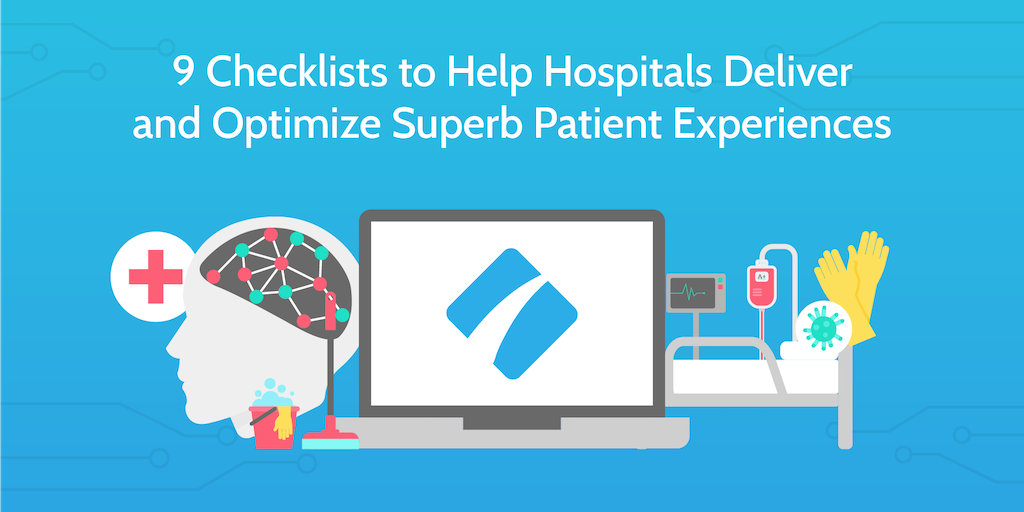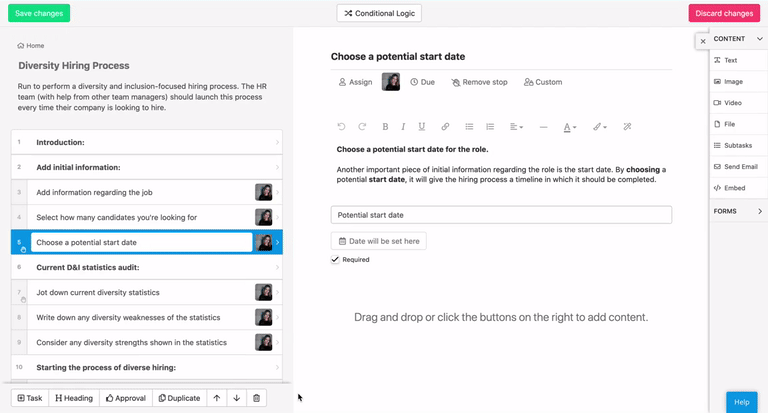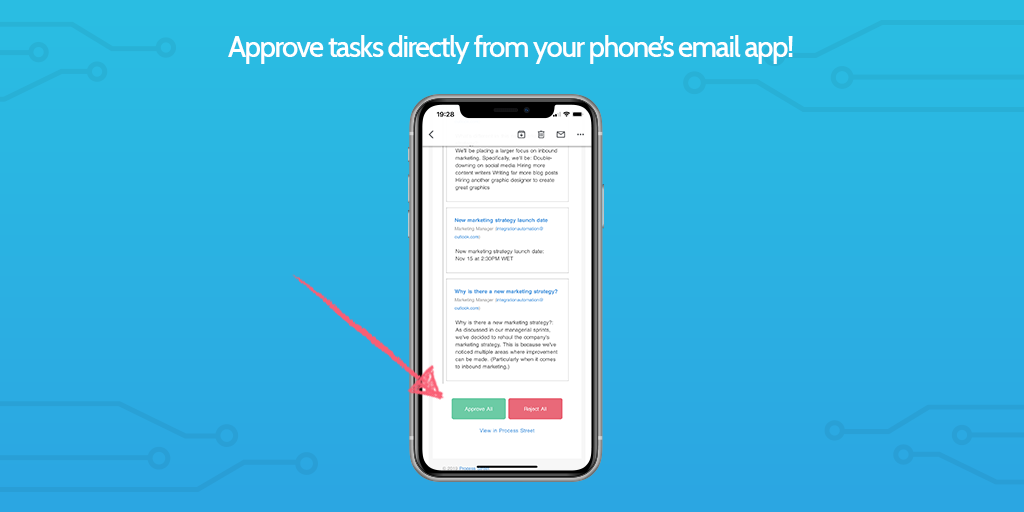
Checklists are becoming an increasingly important focus area for hospitals and other institutions in the medical field when it comes to treating patients more effectively, providing a safe and secure environment for recovery, and improving the overall patient experience.
Why?
Because numerous studies have proven that they work, and in an industry where human error can literally cause the death of a patient, it is absolutely critical for medical professionals to execute processes properly, in a timely fashion, and without missing a single step.
While you may initially think that hospital checklists would be a hindrance in a profession that requires fast, effective action, this is simply not the case if checklists are integrated and used properly.
There is no published data to date indicating that checklists may have contributed to adverse events, such as imposing a burden on the primary care providers, delays in treatment because of lengthy checklists, or errors of omission. Rather, they are largely considered important tools to condense large quantities of knowledge in a concise fashion, reduce the frequency of errors of omission, create reliable and reproducible evaluations and improve quality standards and use of best practices. – International Journal for Quality in Health Care
If you have been a long-time user of Process Street, you may well be aware of our admiration for the work of Atul Gawande, MD, author of The Checklist Manifesto published in 2009.
This book is what really kickstarted the adoption of checklists in healthcare, most notably, the World Health Organization (WHO) surgical safety checklist which WHO developed in conjunction with Dr. Gawande, supported by the compelling insight he provided in his book.
In the Keystone Initiative’s first eighteen months, the hospitals saved an estimated $175,000,000 in costs and more than 1,500 lives. The successes have been sustained for almost four years—all because of a stupid little checklist. – Atul Gawande, The Checklist
The checklist is currently supported by hundreds of organizations around the world.
If you are interested in reading more about Dr Gawande and his book, I have provided links to a number of resources at the end of the article.
Among 8 other free checklists we are about to present, we have adapted the WHO surgical safety checklist to fit the format of our software, so you can keep a digital footprint and ensure each and every surgery has been performed as it should be.
The other 8 checklists cover a range of important healthcare processes including cleaning a patient room, conducting a safety inspection, ensuring compliance with HIPAA regulations, and more.
If you want to dive in and go straight to the checklists, there are quick links right below. Otherwise, scroll down for a brief intro to each one and access other useful resources.
- Hospital Housekeeping Checklist
- Terminal Room Cleaning Checklist
- Hospital Safety Inspection Checklist
- General Infection Control Checklist
- Patient Satisfaction Survey Checklist
- Home Visit Checklist
- Mental Health Risk Assessment Checklist
- WHO Surgical Safety Checklist
- HIPAA Compliance Checklist
Our 9 hospital checklists for accountable and transparent healthcare
Hospital checklist #1: Hospital Housekeeping Checklist
Firstly, to clear up any confusion, housekeeping in this context refers to the general cleaning of patient rooms in hospitals or other medical institutions. This includes floors, walls, beds, bathrooms, surfaces, as well as various medical and non-medical equipment.
Proper disinfection and sanitization is vital for minimizing the risk of infectious diseases spreading, and is essential for providing the patient with a safe and pleasant environment that will help lead to a speedy recovery.
From snapping on your disposable gloves and placing a safety sign by the door, to disinfecting equipment and high-touch surfaces, this comprehensive checklist provides clear instructions on every step that needs to be taken in order to fully clean a patient room.
Click here to get the hospital housekeeping checklist
Hospital checklist #2: Terminal Room Cleaning Checklist
This checklist is similar to the one above in that it is concerned with cleaning a room. However, the crucial distinction is that a terminal room is unoccupied due to a patient being moved or discharged, and therefore includes a number of other tasks (e.g. disinfecting the mattress and making the bed with fresh linen) that would not be appropriate when performing daily housekeeping for a room being occupied by a patient.
The purpose of terminal room cleaning is to rid the room of infectious agents that may have manifested during the patient’s stay, in order to provide the new occupant with a sanitary environment for recovery and healing.
Click here to get the terminal room cleaning checklist
Hospital checklist #3: Hospital Safety Inspection Checklist
Whilst performing a safety inspection is not a process that applies only to the medical field, you could argue it is even more important to do so regularly given the nature of a hospital’s responsibilities.
A study performed by Consumer Reports found that the highest-scoring medical facilities in the US still only received a safety rating of 70 to 75 points out of a possible 100. The study also reported that hospitals failing to conduct proper safety inspections contribute to nearly 200,000 patient death each year in the US. Therefore, it is incredibly important that your hospital recognizes the importance of, and prioritizes regular safety inspections.
This checklist will guide you through completing tasks that fall under the following categories:
- Fire safety and evacuation
- Electrical safety
- Hazardous material safety
- General safety
- General security management
Integrate this free checklist into your processes to ensure you are providing patients and staff members with a safe environment that is equipped to deal with emergency situations.
Click here to get the hospital safety inspection checklist
Hospital checklist #4: General Infection Control Checklist
According to the WHO, Infection Prevention and Control (IPC) is a scientific approach and practical solution designed to prevent harm caused by infection to patients and health workers. And as you would expect, it’s incredibly important.
The Centers for Disease Control (CDC) reports that healthcare-associated infections (HAIs) affect between five and 10 percent of hospitalized patients in the US each year, resulting in 99,000 deaths and an estimated $20 billion in healthcare costs. These are serious numbers that can be significantly reduced by conducting thorough infection control audits with the assistance of a checklist.
A checklist is an incredibly valuable tool for performing such audits because each and every task that needs to be completed is clearly stated and in the case that staff members miss something, this can be identified and addressed immediately to avoid any further complications.
By running this checklist, you ensure that everything is being done to control and minimize the spread of infectious waste throughout your healthcare facility.
Click here to get the general infection control checklist
Hospital checklist #5: Patient Satisfaction Survey Checklist
It is becoming increasingly apparent in the field of healthcare that patient satisfaction is an important metric that directly impacts patient recovery and provides significant opportunities to optimize internal processes.
According to HealthLeaders Media’s 2013 Industry Survey, over half (54%) of healthcare executives say patient satisfaction is one of their top three priorities.
Although the priority of a hospital is of course to ensure the well-being of patients under their care, the fact that running a successful hospital is in many ways similar to running a business, must not be overlooked.
In other words, establishing a process to collect data regarding the patient experience and leveraging that data to optimize service delivery is an incredibly effective way to invest in the future of your hospital.
This checklist provides a simple and effective way to collect important feedback from patients as it relates to the care they received or are currently receiving at your facility.
Responses to the following questions will provide actionable insight that can and should be used to continuously improve the treatment and care provided by your staff.
Click here to get the patient satisfaction survey checklist
Hospital checklist #6: Home Visit Checklist
Home visits are an important component of healthcare that can vary greatly in quality depending on the behavior of the healthcare professional and on the level of information gathered during the visit.
The patient is in their home environment, their comfort zone, so its incredibly important that any healthcare professional visiting them comes with a clear purpose and behaves in a kind, polite manner. The latter cannot be controlled or achieved with a checklist, but the former most certainly can.
During a home visit, there are certain tasks that should be completed in order to ensure that the medical workers walk out the door having gathered valuable information that can be used to take care of the patient however necessary.
This checklist will walk you through evaluating the patients:
- Impairments and immobility
- Nutrition
- Relationship with other people
- Medication
- Physical condition
- Home environment
- Home safety
By conducting the visit with this clear, comprehensive checklist in hand, a healthcare professional can make sure they are gathering all necessary information to make an accurate evaluation and free up time to focus on building a trusting relationship with the patient.
Click here to get the home visit checklist
Hospital checklist #7: Mental Health Risk Assessment Checklist
Mental health is a complex and multi-faceted topic.
Nothing is as simple as it may seem, and so even with the guidance of a thorough checklist, it’s important that the healthcare professional carrying out the assessment is well-qualified and recognizes the level of sensitivity that comes with evaluating an individual experiencing significant distress.
With that said, the checklist we have created to conduct a risk assessment of an individual suffering from mental health issues is an excellent tool to ensure that no important data points are being missed, particularly when it comes to abuse the person may have experienced or witnessed, and any indication that the patient might attempt to harm themselves or others.
This checklist will guide you through all of the critical aspects of mental health issues, providing the tools to gather important data needed to make an accurate assessment of what needs to be done to help get the patient’s life back on track as soon as possible.
Click here to get the mental health risk assessment checklist
Hospital checklist #8: WHO Surgical Safety Checklist
This is the big daddy of checklists in the healthcare industry.
As stated on the WHO website:
The WHO Surgical Safety Checklist was developed after extensive consultation aiming to decrease errors and adverse events, and increase teamwork and communication in surgery. The 19-item checklist has gone on to show significant reduction in both morbidity and mortality and is now used by a majority of surgical providers around the world. – WHO Surgical Safety Checklist
This digitized version of the checklist is designed to help you keep track of all the surgeries taking place at your hospital, saving time and effort that would otherwise be spent looking through stacks of papers and files.
Its the ultimate way to keep everyone accountable for their role in preparing for and performing surgery as our activity feed feature lets you always know who did what and when.
Click here to get the WHO surgical safety checklist
Hospital checklist #9: HIPAA Compliance Checklist
Health Insurance Portability and Accountability Act (HIPAA) fines cost ten companies $28.7 million in 2018, which broke the previous 2016 record for HIPAA fines by 22%!
That’s a pretty shocking statistic, especially when you consider that being HIPAA compliant really isn’t that difficult, it just takes a certain level of commitment and knowledgable minds to establish security measures that adequately protect patients’ data.
Not sure if you need to be HIPAA compliant?
Well, if your healthcare organization is an entity that uses and has access to Protected Health Information (PHI), then you are classified as a Covered Entity (CE) and need to make sure you are compliant with HIPAA regulations.
There are three critical components to PHI security:
- Technical safeguards
- Physical safeguards
- Administrative safeguards
This checklist will take you through each of the three components, providing clear instruction on what needs to be done (if you haven’t done it already) in order to ensure full compliance, and in turn, peace of mind that a hefty fine won’t be coming your way due to a breach of personal patient information.
Click here to get the HIPAA compliance checklist
Harness the power of our new approvals feature for your hospital checklists
With our fantastic new feature Approvals, you can streamline the completion of any tasks that need authorization by another person.
A number of approval tasks have been built into the templates above, including the following:
- Hospital Housekeeping Checklist
- Task 33- Confirm the room has been cleaned
- Terminal Room Cleaning Checklist
- Task 31- Confirm the room is ready for the next patient
- Hospital Safety Inspection Checklist
- Task 35- Confirm the inspection has been completed
- Hospital Infection Control Checklist
- Task 52- Confirm the infection control audit has been completed
- HIPAA Compliance Checklist
- Task 25- Confirm standards for all three safeguards are being met
Creating your own approval tasks is super simple. Here is a quick overview of how to do so.
To add an approval task, click on the approvals button on the bottom left-hand bar within the template editor, where tasks and task headers are usually added.
Once the approval task has been put in, you can then select which tasks are subject to approval.

After the tasks that are subject to approval have been completed, the assigned decision-maker can then open the checklist, see the information from the tasks, then either approve, reject, or reject with a comment. With approvals, it’s not just a case of flat-out acceptance or rejection; comments can be sent to the submitter to provide the feedback necessary for the task’s completion.
You can approve (or reject) tasks directly from your phone
What’s even quicker than approving or rejecting items from a browser on your laptop is doing it via your phone’s email app.
This enables you to make important decisions while on the go, no matter if you’re walking to an important meeting, or in a cab on your way to catch a flight.

4 key benefits of Process Street’s approvals feature
Here are four of the biggest benefits our approval feature can bring to your organization:
- Ensures critical tasks receive the necessary oversight.
- Managers and higher-ups can approve items and tasks quickly.
- Approval tasks can be used alongside pre-existing task features (e.g. conditional logic, dynamic due dates, task permissions)
- Fosters inter and cross-team collaboration.
With all the above benefits in mind, why not upgrade to the Professional pricing plan today and harness the power of a simplified approval flow yourself?
Other useful resources for medical professionals
I mentioned at the beginning of the post that I would provide some additional resources regarding the work of Dr. Atul Gawande. Well, below are a handful of links to articles we have written on him and his book, The Checklist Manifesto, as well as some insightful external resources.
Also included is a Patient Intake Checklist for a medical clinic and an Electrical Inspection Checklist for Hospitals that you may find useful.
What do you think of these templates? Have you any suggestions of checklists that could help you improve internal processes and the overall patient experience at your medical facility? Comment below and let us know!







 Workflows
Workflows Projects
Projects Data Sets
Data Sets Forms
Forms Pages
Pages Automations
Automations Analytics
Analytics Apps
Apps Integrations
Integrations
 Property management
Property management
 Human resources
Human resources
 Customer management
Customer management
 Information technology
Information technology



Alex Gallia
Alex is a content writer at Process Street who enjoys traveling, reading, meditating, and is almost always listening to jazz or techno. You can find him on LinkedIn here